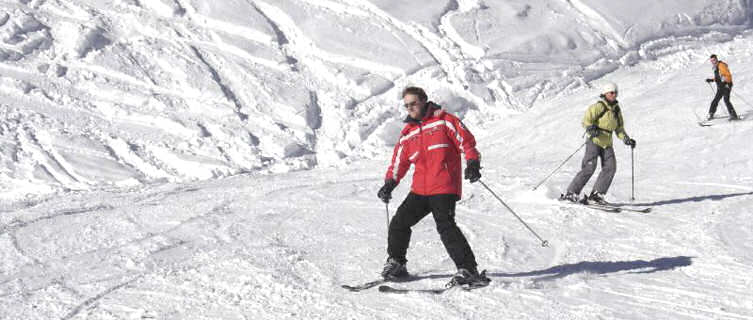
Val d'Isère ski resort
Val d'Isère ski resort is a traditional French Alpine village with centuries of history and beautiful stone chalets, which contrasts starkly with neighbouring Tignes' purpose-built apartment blocks.
Skiing began here in the 1930s, but really took off after WWII and has continued to grow in popularity ever since.
Today, Val d'Isère is a lively resort with busy shops, restaurants and a buzzing nightlife that attracts a large smattering of British and Scandinavian skiers. The resort centre has been extensively redeveloped in recent years and is now largely pedestrianised.
Val d'Isère ski resort is also a leading competition venue. It held several events during the 1992 Winter Olympics and most recently was host venue of the 2009 Alpine World Ski Championships. Staging these two events, in addition to regular World Cup competitions, place it in an elite group of five resorts worldwide that have staged all three levels of world-class international competition.
Together with Tignes, Val d'Isère forms part of the 10,000-hectare (25,000-acre) Espace Killy ski area, home to some of France's best on- and off-piste terrain and one of the world’s biggest lift-served verticals.
Val d'Isère is located in the southeastern French region of Savoie in the Western Alps, close to the Italian border.
On the slopes
The main ski season in Val d'Isère runs from early December until early May. Summer skiing is available on the Pissaïllas glacier for just a few weeks in June and early-July.
A combination of mostly modern cable cars, gondolas, funiculars and chairlifts whisks skiers up from Val's centre, as well as from the nearby villages of La Daille, Le Laisinant and Le Fornet.
A huge project to redevelop the key Solaise sector above the resort was completed ahead of the 2016/17 ski season, transforming the entire area. Perhaps the project’s most noteworthy addition is the new 10-person gondola with 91 cabins - all complete with heated seats and Wi-Fi - that increased uplift capacity by 40%.
There are nursery slopes at the top of Solaise and at the La Daille base, while Bellevarde is a good area for progressing with its wide-open, easy green runs and several ski schools to choose from.
There are some cruisey reds and blues from Bellevarde down to La Daille, including the Coupe du Monde OK run that suits intermediates looking for a challenge.
Advanced skiers and riders, meanwhile, can speed down the black Face on Bellevard with its jarring moguls. But it’s off-piste terrain where Val d'Isère really comes good, with some of the best options in the world. Experienced off-piste skiers should try the Couloir des Pisteurs with its narrow descent, while those with less experience or bravery can head for the Pays Désert above Le Fornet.
Freestylers can play in the terrain park in the Bellevarde area with its jumps, rails, boardercross course and dedicated lifts.
Average snow depth in Val d'Isère

Historical snow depth in Val d'Isère
Do you have any Feedback about this page?
© 2025 Columbus Travel Media Ltd. All rights reserved. No part of this site may be reproduced without our written permission, click here for information on Columbus Content Solutions.








 You know where
You know where